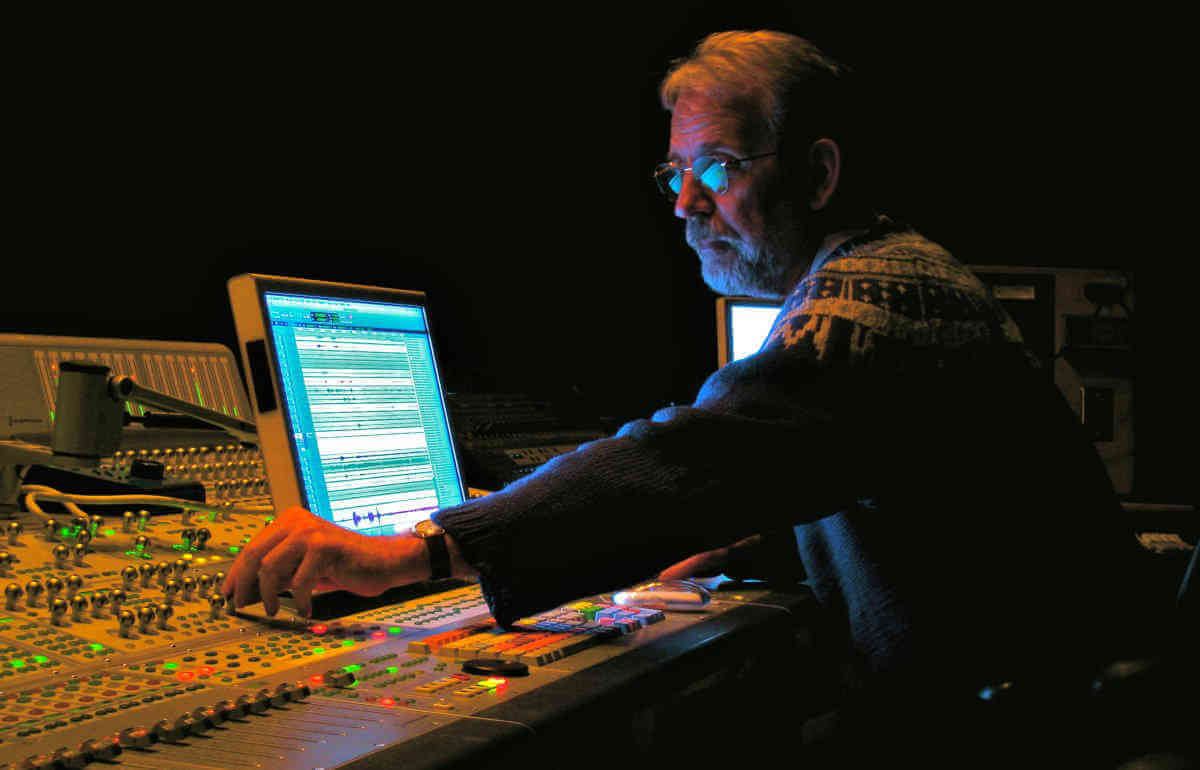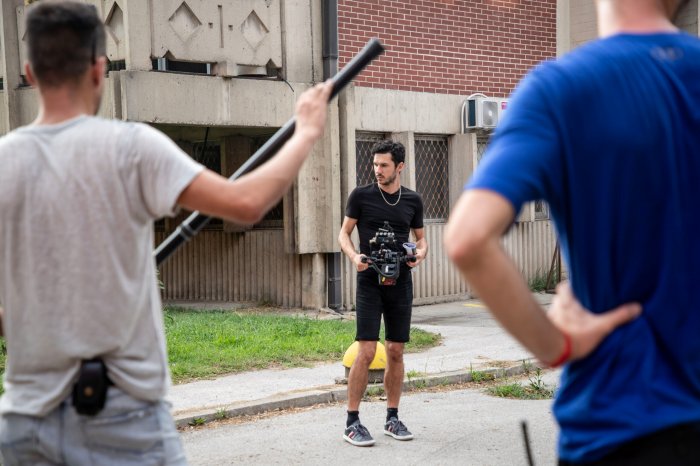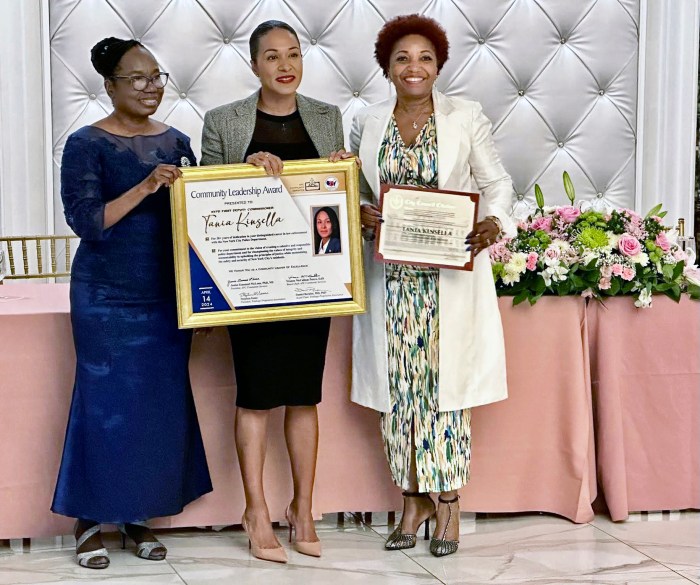In her upbeat documentary, “Making Waves: The Art of Cinematic Sound,” out lesbian director Midge Costin pays loving tribute to the unsung heroes of cinema: the sound designers.
Costin explains how sound helps us make sense of the world (and the movies) by illustrating the ways sound triggers emotions — be it from voices, sound effects, or music. She celebrates Foley artists who create the noises that bring characters to life and she pays tribute to masters of sound design by profiling Walter Murch (“Apocalypse Now”), Ben Burtt (“Star Wars”) and Gary Rydstrom (“Saving Private Ryan”). Costin also shows the history of sound in cinema, from the silent era and first talkies, to mono vs. Dolby soundtracks, to multitrack. It may — pardon the pun — sound like a film geek’s dream, but Costin’s approach makes viewers appreciate the importance of sound in film. Moreover, she interviews Hollywood heavyweights including Barbra Streisand, Steven Spielberg, Ang Lee, David Lynch, and Ryan Coogler, as well as various sound and sound effect editors for their notes on sound.
Costin recently spoke with Gay City News about “Making Waves.”
GARY M. KRAMER: Your background is in sound editing. What prompted this career?
MIDGE COSTIN: At film school, I would have panic attacks when I had to work on sound. I fell in to sound in a funny way. I wanted to be a picture editor. A friend asked me to edit sound effects for a film and I was responsible to set the mood and tone. I started to work with story and sounds and then it was one job after another. I worked on “Days of Thunder;” I did the sound effects of the car driven by whoever was racing against Tom Cruise. It was surround sound, and I was working on NASCAR cars. It was so cool, and fun, and I was one of the few women cutting sound effects on the big films, so that kept me interested. In the ‘90s I was working on all these Michael Bay and Jerry Bruckheimer movies. I found myself teaching and I tell my students how to use sound for story purposes — which I didn’t get when I went to school.
KRAMER: I like how Walter Murch says that he was influenced by John Cage, who thought every sound — even a piano being shut — was music. How did you come to appreciate sound?
COSTIN: It was “Eraserhead.” One of the first scenes is the main character walking through a neighborhood and I remember the ambiances. When he goes inside the house, the different room tones were evocative. That was creative and had an effect on me.
KRAMER: I like how the film shows sound as a character, such as the wind in “Brokeback Mountain.” Can you talk about that aspect of the art?
COSTIN: I feel like ambiances are the music to every scene and that’s how I’ve always felt. It sets the mood and tone. It’s beautiful and subtle; you don’t feel manipulated like you do with music. It hits you in your gut whether you are aware of it or not. I hope this translates not just to movies, but how people also think about sound in their lives.
KRAMER: You use examples juxtaposing a silent clip of boxers against a scene from “Raging Bull” to show the importance of sound in film. What was your approach to your film, which is like a master class on sound?
COSTIN: I wanted to interview big sound designers, but also the directors who care about sound. I wanted to show how these big filmmakers take sound into consideration, and that sound is used as an art form to tell a story and it is super emotional. We know this from music, but to explore sound from emotion is important. I didn’t know anything about the history, so we got into the history, and that was a way to explore how it developed. Sometimes people think it is technology-led, but it’s the artists and directors who care about sound that push for a new way. Like Francis Ford Coppola, or George Lucas.
KRAMER: Or, Barbra Streisand, who talks about the importance of stereo sound in making “A Star Is Born” in 1976, and insists on singing live in “Funny Girl” to generate emotion?
COSTIN: What’s funny about Barbra Streisand is that she had no idea that she was part of film history in that way. Interviewing Ioan Allen — he was the engineer who went to Ray Dolby and suggested getting into movies — he talks about going to all the studios and they said they did not need and did not want to spend the money for stereo. Streisand didn’t know it wasn’t an option and that they would need to change everything. The system changed. Allen gave Streisand the credit.
KRAMER: I was pleased “Making Waves” has an interviewee address gender representation and that your film includes minorities and LGBT crew members.
COSTIN: I think it’s really important to see ourselves, and that there is a diverse group of people doing the work. I wanted to show that. Ai-ling Lee is one of the best sound designers. She worked on “Wild.” Women sound designers kind of get in what’s considered “women’s films,” and I wanted to bring attention to that. I included Bobbi Banks who did ADR on “Selma.”
As a lesbian, I wouldn’t see myself often enough in things, so I wanted to add “Brokeback Mountain” to feel included and not have this be the straight white men’s history of sound.
KRAMER: Do you feel “Making Waves” is breaking movie magic by revealing trade secrets?
COSTIN: No. Because no one notices sounds, we get to manipulate audiences. People think that knowing the secrets ruins things, but I get caught up in the movie. Only when it is really good or bad sound do I notice it.
MAKING WAVES: THE ART OF CINEMATIC SOUND | Directed by Midge Costin | Distributed by Matson Films | Opens October 25 at the Cinema Village, 22 E. 12th St. | cinemavillage.com




































